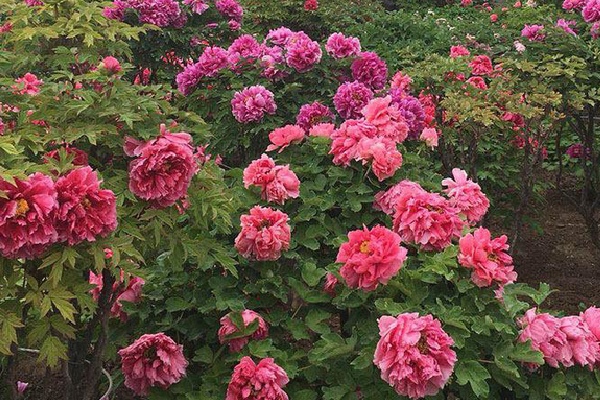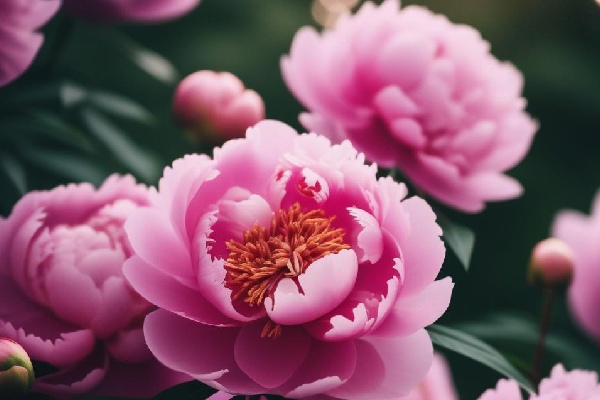Peonies, renowned for their vibrant colors, delightful fragrance, fuss-free cultivation characteristics, and longevity, it is one of the most famous and beloved perennial plants. Peonies thrive in nearly any location across the country, with many varieties even surviving winters in Zone 2 (temperatures as low as -50 degrees Fahrenheit).
If a peony is well-situated and happy, it may bloom for 100 years or more with little or no attention. This means it’s worth taking some time upfront to choose the right planting location and prepare the soil. That said, there are many stories of forgotten peony plants flowering in woodlands, complementing ancient cellar holes. However, like all plants, peonies will be healthier, more vibrant, and more floriferous if they have ideal growing conditions.
Table of Contents
ToggleWhere to Grow Peonies
Peonies thrive in Zones 3-8 happily. Pair these early summer beauties with flowering bulbs such as irises, baptisia, columbines, hydrangeas, and alliums.
1. Peonies enjoy full sun (at least 6 hours per day)—those growing at the warmer end of their range (Zone 8) will appreciate afternoon shade.
2. Peonies prefer fertile, rich, well-draining soil. Think lots of nutrients but without heavy, wet clay. If your soil is poor, consider planting peonies in raised beds where they can achieve maximum drainage.
3. Space peonies approximately 3-4 feet apart to promote good air circulation between plants and leaves.

How to Plant Peonies
Plant peonies in the autum when they are dormant. Settle peonies into their planting holes about 4-6 weeks before a hard freeze hits your region.
Planting Bare-Root Peonies:
- Dig the soil to a depth of 12-18 inches. Also, use a garden fork to loosen the sides of the planting hole.
- Add a shovel of compost and a handful of general-purpose organic granular fertilizer to the hole’s bottom, then add a shovel of original soil. Use this amended soil to create a “cone” in the hole, and place the peony roots on top of the cone, allowing the roots to drape on either side.
- Crucially, ensure that the “eyes” or growing buds near the base of the old stems end up no more than 2 inches below the soil surface. If the peony roots are positioned deeper than this, the plant may grow well but it will produce few if any blooms.
- Backfill halfway with original soil, then deeply water to help fill any air pockets.
- Complete the backfilling of the hole.
Planting Container-Grown Peonies:
Container-grown plants can be planted similarly. Just dig a hole twice as wide as the root ball but no deeper.
- Amend the soil as described above.
- During planting, ensure the soil surface in the pot is level when the new plant is in the ground.
- As above, backfill halfway, deeply water, and then complete the backfilling.
Supporting Peonies
Depending on the cultivars and growing conditions, you may want to provide some flower trellis for your peonies when they are in bloom. This is especially true for double or “bomb” type flowers, as they become waterlogged and very heavy once the blooms start opening. Plants supports should be placed early in the growing season before the plant reaches several inches in height. Once the plant is fully filled out, especially when it is in bloom, it’s almost impossible to establish an effective support system.
Caring for Peonies
Peonies rarely flower much in their first year after planting. It typically takes three years to see a rich display of blooms. But once the plant starts flowering, you can expect beautiful blooms for a lifetime.
Annual Feeding: A yearly dose of compost top dressing is all peonies need to stay healthy. If you mulch your flower bed, make sure to keep the mulch away from the base of your peonies. If the base is covered with mulch, the plant reacts as if it’s planted too deeply and will produce very few flowers (if any).
Watch for Fungi: Like other fungal diseases, botrytis exists in most soils. It generally becomes a problem only when the plant is, the weather is unusually cool and damp, or there are other infected plants nearby. Signs of botrytis include blackened buds and stems, and sometimes rotting at the base of the plant. Cut off and dispose of any affected areas (place this material in the trash, not the compost pile). The best strategy for botrytis issues is prevention, which can be traced back to proper planting.
Occasional Division: Peony plants seldom need dividing. If a clump of plants is too large for the given space or you want to share some plants with friends, fall is the ideal time for division. Trim the foliage, carefully lift the entire plant out of the ground, and with a sharp knife.


Can you be more specific about the content of your article? After reading it, I still have some doubts. Hope you can help me.
I don’t think the title of your article matches the content lol. Just kidding, mainly because I had some doubts after reading the article.
Can you be more specific about the content of your article? After reading it, I still have some doubts. Hope you can help me.
Can you be more specific about the content of your article? After reading it, I still have some doubts. Hope you can help me.
Your point of view caught my eye and was very interesting. Thanks. I have a question for you.